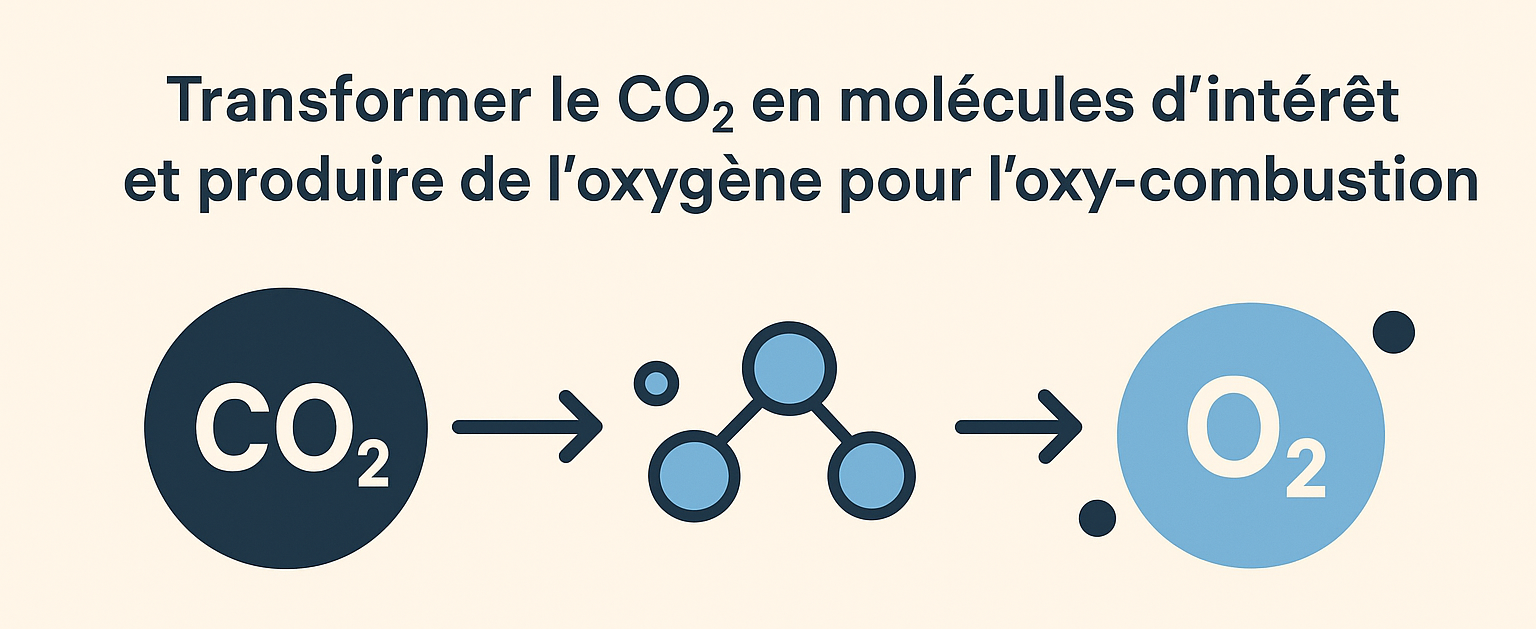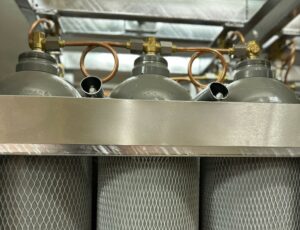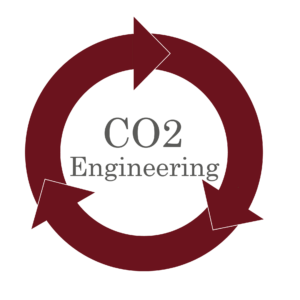TRANSFORM CO₂ INTO MOLECULES OF INTEREST AND PRODUCE OXYGEN FOR OXY-COMBUSTION.

Oxy-combustion is a technology that involves burning a fuel in the presence of pure oxygen, rather than using ambient air. This produces fumes containing mainly CO₂ and water vapor, making it easier to capture CO₂ for storage or recovery. However, the production of pure oxygen is energy-intensive. An alternative is to develop processes capable of converting CO₂ into molecules of interest while producing pure oxygen as a co-product.
- Biological systems: natural photosynthesis
Plants, algae and cyanobacteria fix CO₂ with light, producing organic molecules such as sugars, lipids and organic acids. Oxygen is released when water is oxidized in the photobioreactor.
Benefits A natural, direct process using low-consumption solar or artificial energy.
Limits low photosynthetic yield (< 5 %), high surface and resource requirements.
- Artificial systems inspired by photosynthesis: a) Artificial photosynthesis : This approach is inspired by natural photosynthesis, but with improved efficiency. Research carried out by the CNRS has shown that photocatalysis can be a promising route for CO₂ conversion, particularly when combined with advanced catalytic materials. CNRS Le journal b) Electrolysis of CO₂ : CO₂ electrolysis is an electrochemical process in which CO₂ is reduced at the cathode to produce fuels or chemicals, while at the anode, water is oxidized to produce pure oxygen. This process offers flexibility in the products obtained and can be coupled with renewable energy sources. According to IFP Energies Nouvelles, CO₂ electrolysis is a developing technology with significant potential for CO₂ recovery, although challenges remain in terms of cost and efficiency. ifpenergiesnouvelles.fr
- Thermochemical metal oxide cyclesThermochemical cycles use metal oxides, such as cerium (CeO₂), to carry out reduction and oxidation reactions. At high temperatures, the metal oxide is reduced, releasing pure oxygen. This reduced material is then reoxidized by CO₂, producing CO and regenerating the metal oxide. A thesis from the University of Perpignan investigated the use of thermochemical cycles for the production of synthetic solar fuels, highlighting their potential for CO₂ upgrading. theses.fr
- Hybrid approachesCombined solutions are emerging to improve the efficiency of CO₂ conversion:
- Photoelectrochemistry (PEC) Combining light and electrolysis to increase yield.
- Bioelectrochemistry : using electroactive micro-organisms that reduce CO₂ thanks to an electrical source, with parallel production of O₂.
Conclusion
Producing pure oxygen at the same time as molecules of interest derived from CO₂ is a strategic way of making oxy-fuel combustion more competitive.
- Biological systems natural process but limited yield.
- Partificial hotosynthesis and electrolysis of CO₂ promising but energy-hungry technologies.
- Thermochemical cycles The most advanced technology in the world: robust, capable of producing pure CO and O₂, but requiring extreme conditions.
- Hybrid approaches These are just a few of the R&D projects that are showing great promise in combining efficiency, sustainability and performance.
Eventually, optimal integration of these systems could enable circular CO₂ recovery, coupled with oxy-combustion that's less dependent on grey energy, serving the low-carbon transition.
With this in mind, W Platform has contributed to the development of oxy-combustion by proposing an innovative solution that transforms CO2 into a molecule of interest to produce oxygen.
Related articles
See all articles
W Platform gets a makeover
At W Platform, our mission remains the same: to capture, analyze and valorize CO₂ and other gaseous effluents in a circular economy logic. Since our inception, we've grown, matured, rethought our ambitions, and felt it was time for our image to fully reflect our current vision. That's why we're proud [...]

Supercritical CO₂: a technological lever for sustainable, high-performance extraction.
In a world seeking more environmentally-friendly industrial processes, the search for organic solvent substitutes is a daily quest for a large number of manufacturers. Among the emerging solutions, supercritical carbon dioxide (CO₂ SC) is establishing itself as a breakthrough technology in many fields, from cosmetics to [...]

W Platform awarded Young Innovative Company (JEI) status
We are proud to announce that W Platform was awarded official status as a Young Innovative Company (JEI) last May! This recognition marks a key stage in our development, and recognizes our team's constant efforts to place innovation and eco-design at the heart of our projects. Recognition of our commitment to innovation [...].

A credible alternative to 100% hydrogen for decarbonizing industrial activities
While hydrogen is often presented as the cornerstone of the energy transition, its development raises numerous technical, economic and safety challenges. A new technology, based on recycling CO₂ from combustion fumes and converting it into e-fuels like methanol, opens up a simpler, more pragmatic way of accelerating [...]

Oxy-combustion: when burning with oxygen opens the way to recoverable CO2
A new way to burn In power plants or cement factories, fuels are usually burned with air. But air is mostly nitrogen (nearly 80 %!). As a result, the fumes contain little CO₂ (only 10 to 15 %). Nitrogen is used as a heat transfer agent, and is therefore not [...]
